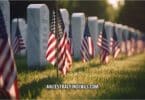WWI was known as the Great War during its time. It became known as the First Great War during WWII. It wasn’t until after WWII that the moniker of WWI was given to the first world war. It was the first war to use airplanes in combat, even before there was an Air Force, as airplanes had been invented about a decade prior to the war. While the United States attempted to stay out of the war for a long time, much as it did during WWII, it was eventually drawn in, and those men who were not already in the military were subject to the draft when it became obvious that there were not enough enlisted military men to take care of the manpower needed for the United States required to win the war.
The draft for WWI was done from 1917-1918. It was done in three phases. The first phase was from June 5, 1917, to June 5, 1918, and was for men between the ages of 21 and 31. The second phase was from June 5, 1918, to September 12, 1918. This second draft was for men who turned 21 since the first draft began. The third and final phase was from September 12, 1918, to the end of the war, and was for all men between the ages of 18 and 45. All in all, around 24 million men signed up for the draft in WWI.
Just because someone signed up for the draft did not mean they actually went to war. Some men were exempted due to age late in the war, while others were exempted due to disability or because they had people who depended solely on them for financial support. They still had to fill out their draft registration cards, though. And you, as a genealogist, can find a lot of information on your ancestors in these draft registration cards. You should definitely be using them in your research if you had any male ancestors living in the United States in 1917-1918.
Here is some of the information you can find in these cards:
Date of Birth
You will find the exact day, month, and year of birth of the men who filled out these draft registration cards. If you didn’t have an exact date of birth for them prior to looking at the cards, this will give it to you.
Place of Birth
The same thing goes for the place of birth. If you didn’t know the town or state in which your ancestor was born, you will discover it in the draft registration card, which will give you a new avenue for doing research.
Address
Also, useful genealogical information, as you can get your ancestor’s exact address at this time period and Google Map it or go visit it in person to see if it is still there today and what it looks like.
Employer and Employer’s Address
If you didn’t know what your ancestor did for a living during the WWI period, you do now. You also know the name of the person or company for which he worked and where it was located. This is all useful information, as it puts your ancestor’s life in more detail, and you can also research his employer to possibly find out even more about your ancestor and his family.
The Name and Address of Someone Who Can Be Contacted in an Emergency for Your Ancestor
This is usually a wife or mother but can be a sibling, child, or even friend or neighbor. In rare cases, it is the person’s employer. Seeing who your ancestor put as his emergency contact person will give you more family information and more detail into who was important to your ancestor and what kind of life he was living during WWI.
The Person or People Your Ancestor is Supporting
If your ancestor was responsible for the financial support of one or more people, they will be listed on the card. Their names are not always specified, and they are more often than not listed as “wife,” “three children,” “mother,” etc. But even knowing this information will tell you a lot about your ancestor’s life at this period in history.
Physical Description of Your Ancestor
The draft registration cards tell you whether your ancestor’s build was tall, medium, or short, what color their hair and eyes were, and what their complexion was like. This is important information if you never saw a color photo (or any photo) of this ancestor, or if you only knew them as an old man with gray or white hair.
Your Ancestor’s Signature
Ancestor signatures are always important and interesting things to have in your genealogy archives, as it is something your ancestor made himself.
You can find WWI draft registration cards on Ancestry.com and FamilySearch.org. The collection on Ancestry.com is more complete, but it is only accessed by subscription, whereas the collection on FamilySearch.org is free. Use these valuable records to discover more about the early 20th century men in your family tree.






